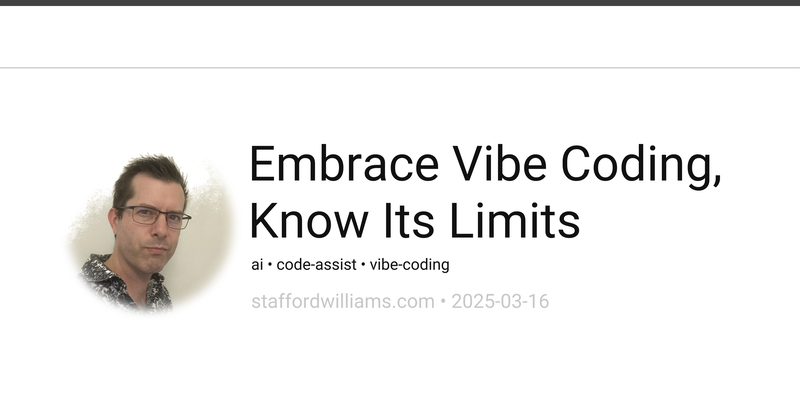The software development landscape has undergone a dramatic transformation in the past few years, with AI coding assistants becoming an increasingly integral part of modern developers’ toolkits. As someone who’s tracked this technological evolution, I’ve witnessed firsthand how these tools have progressed from novelties to essential productivity enhancers.
For JavaScript and React developers, particularly those who’ve been unable to utilize these tools due to workplace restrictions, the current state of AI assistance in 2025 presents an exciting re-entry point into this rapidly advancing field.
Developers – The Current AI Coding Assistant Ecosystem
GitHub Copilot continues to maintain a significant market presence, but it’s no longer the only major player in the field. Several compelling alternatives have emerged, each with distinct strengths and limitations that appeal to different developer workflows.
The most frequently recommended VSCode AI coding assistants in 2025 include:
- GitHub Copilot: The pioneer in the space, backed by OpenAI’s technology
- Cursor: A specialized IDE with robust AI capabilities
- Cline: Growing in popularity for its flexibility and customization options
- RooCode: A newer entrant gaining attention for specific use cases
- Codeium: Offers free autocompletion with a credit-based system for advanced features
- Continue.dev: Compatible with Codestral API and local models through Ollama

Developers – Customization: The Key to Productivity
One of the most significant developments in this space has been the emphasis on customization. Tools like Cline now support customizable system prompts through “.rules” files, allowing developers to tailor the AI’s behavior to their specific project requirements.
The “Memory Bank” feature found in several assistants represents another leap forward. This functionality enables AI tools to maintain context about your project, including tech stack details, roadmap information, and progress updates. When implemented effectively, this allows developers to have more natural, continuous interactions with their AI assistants without constantly reestablishing context.
A developer using Continue.dev shared: “Over the past few months it has served me pretty well,” highlighting how these tools can become reliable components of a development workflow when properly configured.
Local vs. Cloud-Based Models
For developers facing workplace restrictions on cloud-based AI services, local model options have evolved significantly. The Continue extension paired with Ollama allows running models like deepseek-coder-v2 entirely on local hardware.
When asked about the best local LLM models, experts recommend:
– Qwen 32B Coder (for systems with sufficient resources)
– Qwen 14B or 7B (for more resource-constrained environments)
This represents a significant development in accessibility, allowing developers in restrictive environments to still leverage AI assistance.
The Quality Conundrum
Despite the advances, quality concerns remain a significant issue. One experienced developer noted: “I stopped toying with AI in VSCode because I found myself spending even more time babysitting and reviewing that code rather than writing the code myself.”
This highlights an ongoing challenge: while AI coding assistants can accelerate certain aspects of development, they can sometimes produce code that requires substantial review and refactoring. In worst-case scenarios, they might generate solutions that a junior developer might propose—technically functional but lacking optimization or adhering to best practices.

Finding the Right Combination
Many developers report optimal results when combining multiple tools for different aspects of their workflow:
“Cline with Openrouter as chat assistant, Copilot as backup, Tabnine as autocomplete, Claude 3.7 as LLM,” shared one developer, highlighting how different tools can complement each other.
This hybrid approach leverages each tool’s strengths while mitigating their weaknesses. For instance, some developers find Tabnine superior for autocompletion while preferring Copilot for more complex code generation tasks.
The Skill Atrophy Concern
A growing concern among developers is the potential for skill degradation. “My biggest concern is that I just forget how to write code myself,” noted one developer, expressing a sentiment that resonates with many professionals.
This represents perhaps the most significant challenge for the industry: balancing the productivity enhancements these tools provide with the need to maintain fundamental coding skills. As these assistants become more capable, developers must consciously maintain their core competencies to ensure they don’t become overly dependent on AI assistance.
Looking Forward
The AI coding assistant landscape continues to evolve rapidly. While tools like GitHub Copilot held early advantages, the field has diversified with numerous competitors offering compelling alternatives with different pricing models, capabilities, and integration approaches.
For developers returning to AI assistance after a hiatus, the best approach is experimental: try multiple solutions, preferably those offering free trials, to determine which aligns best with your specific workflow and project requirements. The “best” solution varies significantly based on individual preferences, project types, and development environments.
What remains clear is that AI coding assistance is no longer a question of “if” but “how” for most developers. The challenge now lies in determining which tools and workflows maximize productivity while maintaining the human expertise that remains essential to quality software development.



